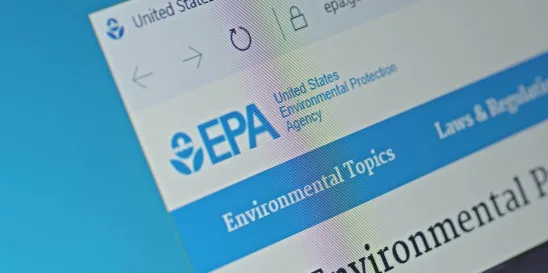Under TSCA Section 8(a)(7), the U.S. Environmental Protection Agency (EPA) has imposed reporting obligations for per- and polyfluoroalkyl substances (PFAS). Federal Register: Toxic Substances Control Act Reporting and Recordkeeping Requirements for Perfluoroalkyl and Polyfluoroalkyl Substances
The October TSCA 30/30 webinar hosted by Keller and Heckman LLP reviewed the reporting criteria and examined its consequences for impacted companies, many of whom may be unaware that they now must comply with this reporting regulation. The new rule, which goes into effect in November 2023, has been estimated by EPA to cost the industry at least $843 million to comply.
Who is required to report?
The PFAS Reporting Rule requires any entity that has manufactured (including imported) PFAS between 2011 and 2022 to report. Notably, the rule applies to neat substances, mixtures, impurities, byproducts, and articles. Under EPA’s TSCA regulations, imported “articles” include most manufactured goods. When the chemical identity of a reportable PFAS is unknown or undisclosed to a manufacturer or importer because it is the proprietary information of a supplier, then the rule has a provision for joint submissions.
How is PFAS defined in the rule?
PFAS is defined as including at least one of these three structures:
- R-(CF2)-CF(R’)R’’, where both the CF2 and CF moieties are saturated carbons;
- R-CF2OCF2-R’, where R and R’ can either be F, O, or saturated carbons; or
- CF3C(CF3)R’R’’, where R’ and R’’ can either be F or saturated carbons.
EPA indicated that at least 1,462 substances manufactured under TSCA are PFAS subject to the rule. However, this list is not all-encompassing. It is important to note that the rule defines PFAS based on chemical structure; therefore, if a company manufactures a PFAS not identified by EPA, the company is still subject to the rule if the PFAS manufactured meets the structural definition.
Fluoropolymers are included in the definition, but fluorinated aromatics are not.
What information needs to be reported?
PFAS manufacturers must report on a vast array of information (e.g., worker exposure, uses, production volumes, disposal) for each PFAS they manufactured at each manufacturing site for each year from 2011 to 2022. PFAS manufacturers must also provide EPA with environmental and health effects information on manufactured PFAS, even if that information was generated before 2011. For health and safety study reports, companies must also transcribe the information into templates developed by the Organization for Economic Cooperation and Development (OECD), if available for that type of study. The reporting extends to information in the files of a subsidiary or a parent, a sister corporation under control by a common parent or general partners, and agents.
Unlike other TSCA reporting rules, the PFAS reporting rule does not have any exemption for small businesses or de minimis threshold for manufacture or import. Byproducts and impurities are not exempt from reporting.
For importers of articles containing PFAS or those manufacturing a PFAS for research and development purposes no greater than 10 kg per year, the rule offers the option for a more streamlined reporting process. However, this is only an option for those importers who do not know and cannot “reasonably ascertain” the information requested in the longer form.
What is not subject to reporting?
PFAS marketed and used exclusively as a food, food additive, drug, medical device, or tobacco product are exempt from the rule. The rule indicates that food packaging use is exempt, but again, only if marketed and used exclusively for that use.
When does the rule go into effect, and what are the details of the reporting period?
The new rule goes into effect November 13, 2023. The EPA will allow one year for data and information gathering before the six-month reporting period begins on November 12, 2024, and ends on May 8, 2025. Article importers who qualify as TSCA small businesses will have an extended six-month period to complete reporting, with reports due by November 10, 2025.
How will EPA evaluate the data?
It is an open question how EPA will evaluate and use the data reported. Additionally, we anticipate the volume of data EPA will receive from the PFAS rule is unprecedented—assuredly overwhelming—in light of the fact that no exemptions or thresholds apply.
Who is not subject to the rule?
Companies that are solely involved in processing, distributing, or using a PFAS, and not manufacturing or importing it are not subject to the rule, nor are companies who solely distribute PFAS within the United States. However, because the rule does not exempt PFAS that are manufactured or imported as byproducts or impurities, companies that inadvertently produce PFAS do fall within the rule’s scope. It is crucial to assess a company’s activities with PFAS substances to determine if they are subject to reporting.







 />i
/>i

